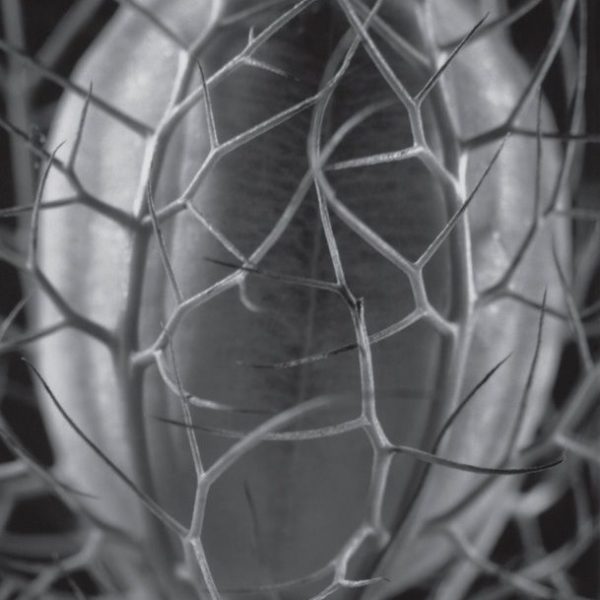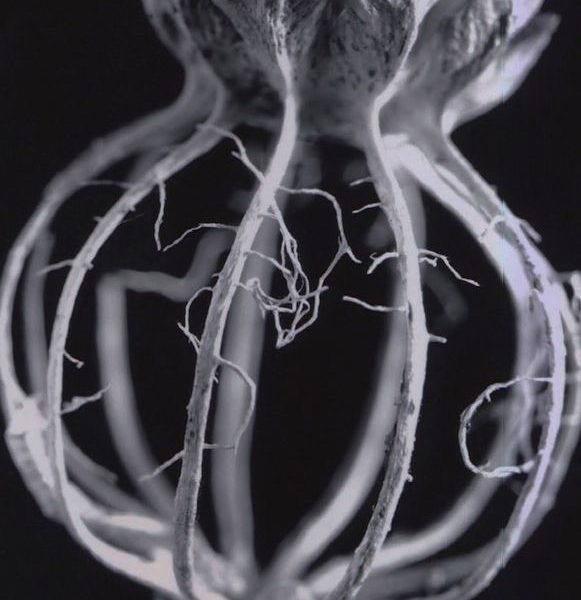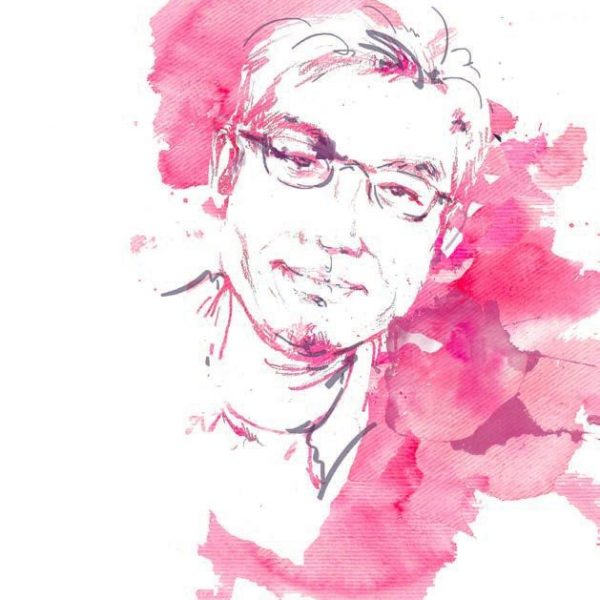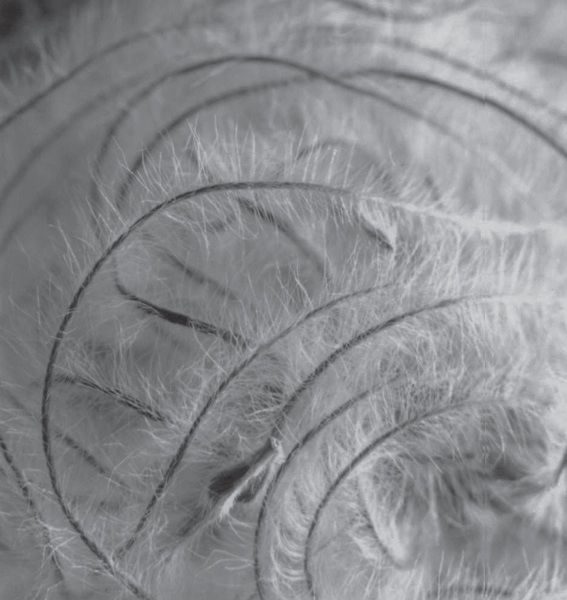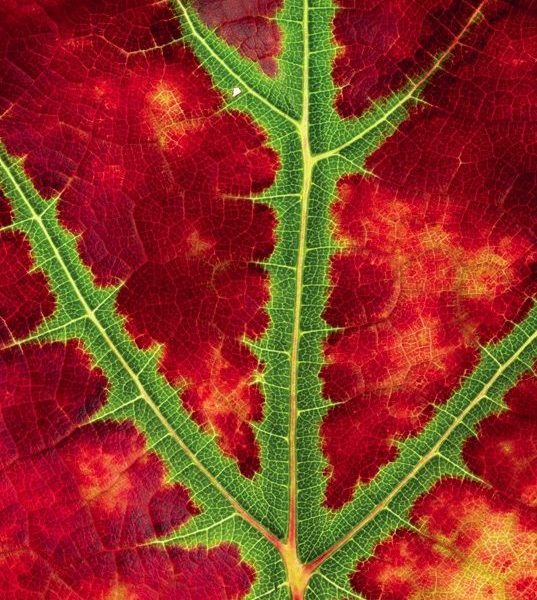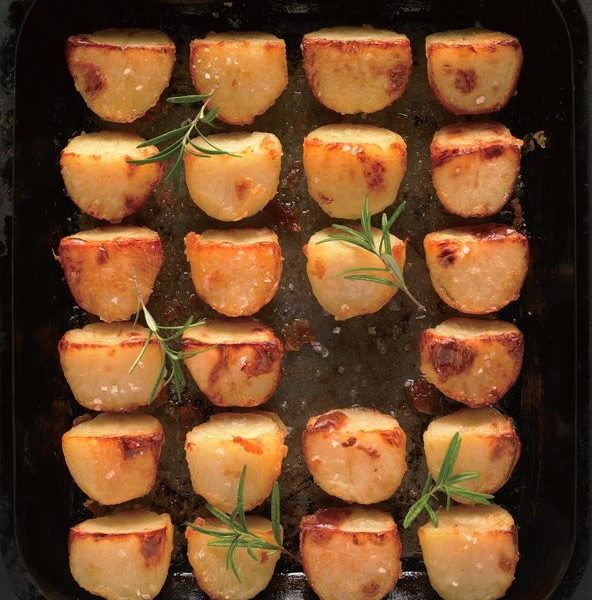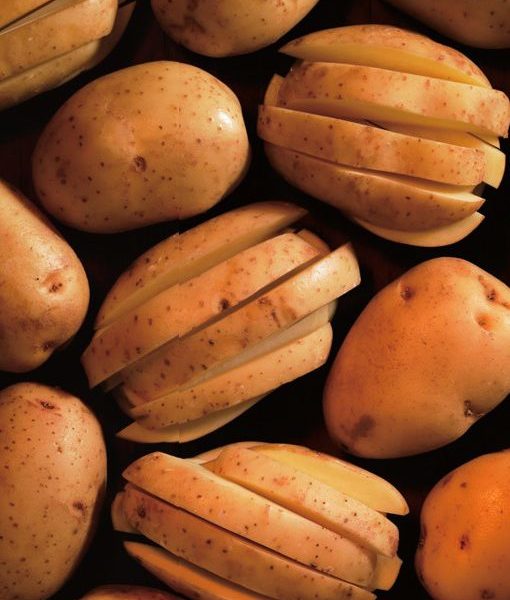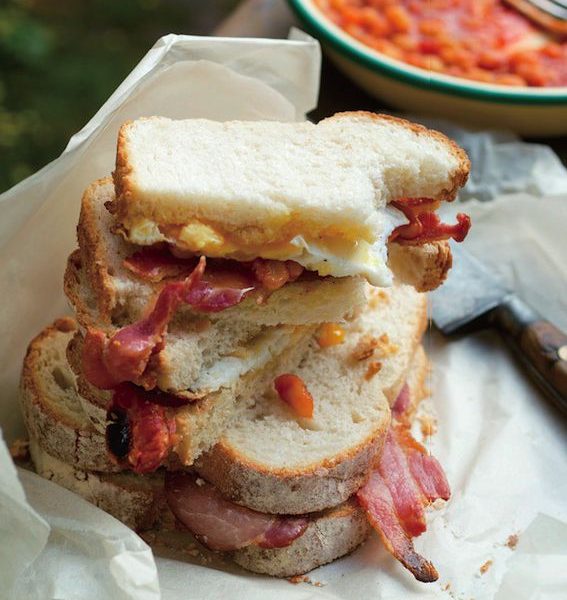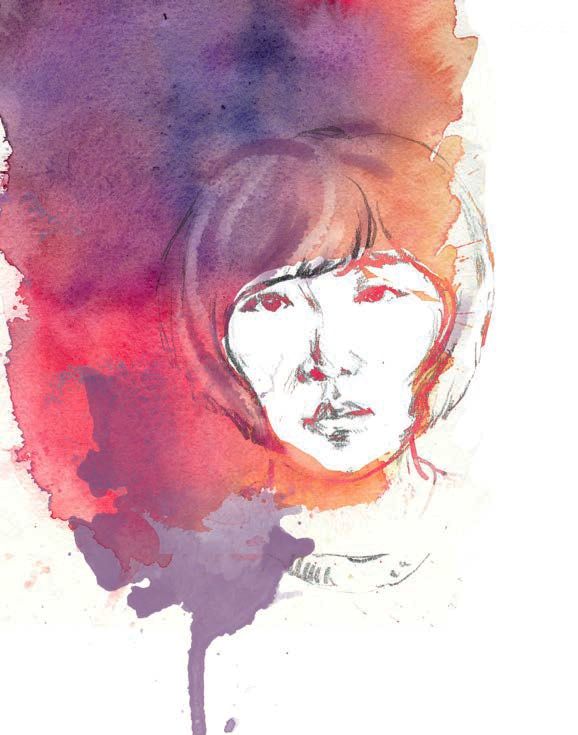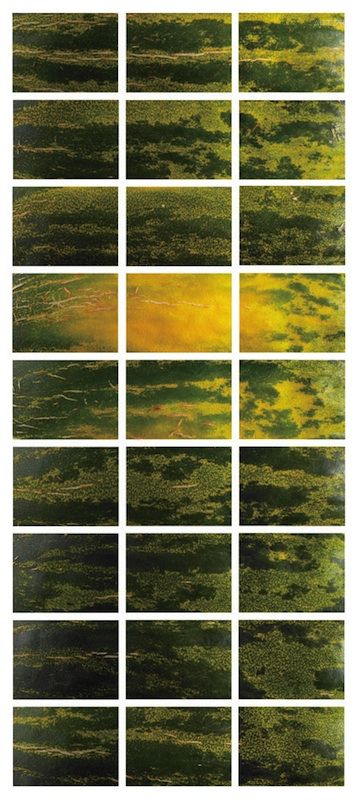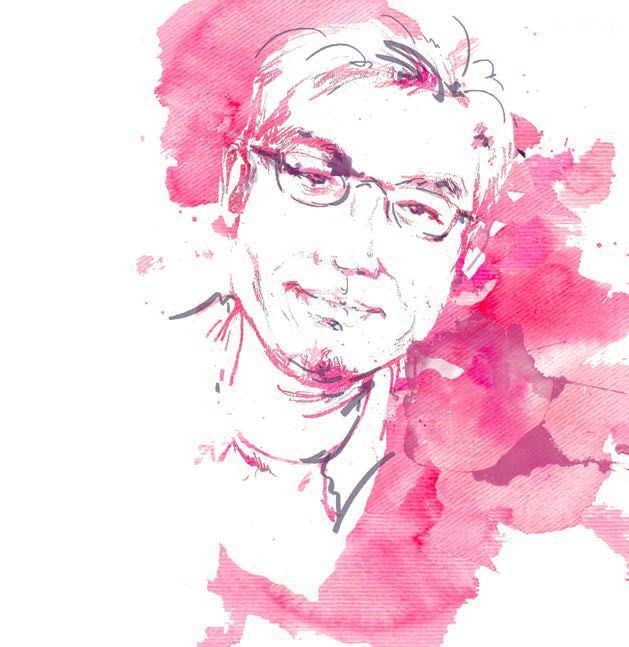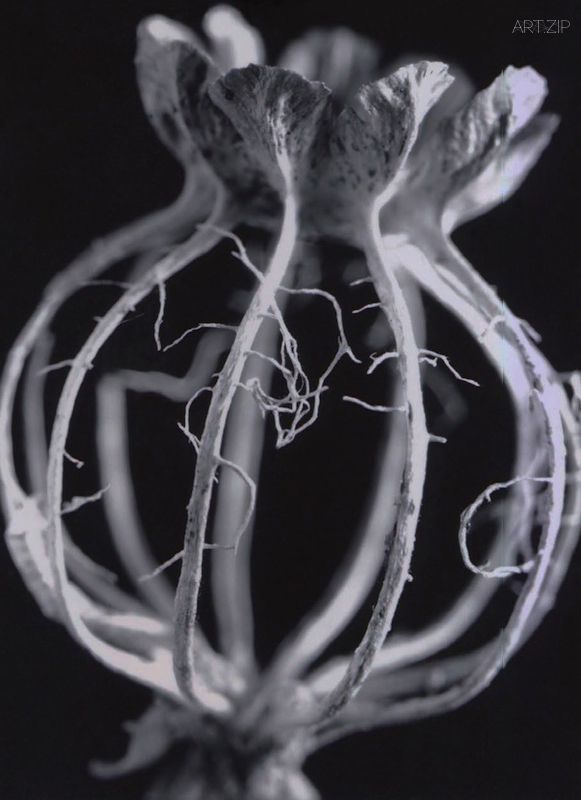
Sue Atkinson
Focusing on food photography, Sue’s client list includes most major food brands and retailers in the United Kingdom. Graduate from Royal College of Art in theoretical studies of Photography, and now is precise on how she sets up her work.
蘇·阿特金森
專業領域於食物攝影,客戶包括 英國大多數食品製造商與銷售 商。碩士畢業於皇家藝術學院攝 影理論專業,如今更加能夠準確 地定位自己的攝影手法。
.
.
ART.ZIP: So tell me a little bit about how you got into photography.
SA: Well, I was always interested in painting and fine art. And I felt, right from when I was quite young that this is sort of the area I want to move into the most- English and Art- that would be my subject. And when I actually left school, I left school at 16 because I want to go to further education college, because that was the only opportunity I had to take the art subject further. I actually had a space in my timetable. My best friend said she’s studying photography. I thought that sounds fantastic because I’ve never realized that you could actually study photography. So that was a great opportunity to start looking at it. And funny enough that was actually where I met Mike who was my photography tutor. He had a particularly good way of analyzing and talking about images, which I think, made me more interested in it as a subject more than just painting and art. So actually I went with the art interests, with the intention of doing art and history. When I finished my O Level, A-Level in photography, I went on to do an art foundation course. I just found that I was getting more and more involved with photography. It was much more sort of a spontaneous way of making an image, but it was still very expressive in the way of working. So I thought that was probably the best way to move ahead in terms of my career. So instead of going off to do art and art history and teaching art, I decided to go off to photography. There weren’t any degree courses in those days, so the only course that was open to me was then PCL, which is now Westminster University. There was a part-time day release course- one day a week, part time day release professional photography. So I studied that for three years and I worked in between times. I did a little bit of working with Mike in the studio- he had a studio then- and I did a little bit of teaching as well. I actually was just teaching O-Level photography so I got more and more involved in it. While I was at PCL, I met two people who were very influential. One of them was my tutor Peter Carey who was an advertising photographer, very successful advertising photographer, very focused, quite frightening sort of person. But he really was committed to photography. And you felt that if you could actually do something to please him, then you could do something. I remember one day I heard him talking to one of the other students about food photography. And he was saying ‘no I don’t think you should be a food photographer.’ And I thought, ‘that’s interesting.’ I’ve never thought of being a food photographer, I think maybe that’s what I’d like to do. But I’d spent weeks in the studio with a set of sherry glasses trying to get the lighting right. And I just couldn’t get on with these very sort of finite objects that needed lighting in a particular way. I just felt, I want something more exciting, something more organic would interest me more. I didn’t want to photograph people either. I was quite nervous in a way. I felt working with objects might be easier than working with people. I was very wrong. So I met Peter and he really inspired me to work on food projects. Obviously I had to do a lot of other things but that was something that came to mind. And then my tutor who was the Dean of the university, Margaret Harper, she was a very successful photo historian. She inspired me to do research into the history of photography because she’d been successful commercial photographer in her own right and there was nothing that ever has been written about the history of commercial photography in Britain. So that seemed another opportunity, in a way I got the two sorts of replacement things for the painting and art history. I found I could turn to photography and the history of photography and they had further opportunities available.
ART.ZIP:能介紹一下你是怎樣開始接觸攝影的嗎?
SA: 我一直對繪畫和美術很感興趣。我從小就覺得文學和藝術是我以後 想從事的領域。我16歲離開了學校,當時想去繼續教育學院讀文科,因 為那是我唯一學文科的機會。所以,我就有了一段空暇時間。我的好朋友 她去學攝影。我想那很好啊,我以前從來沒想到攝影也可以當作一門課 程來學習。當時確實是很好的一個機會。巧合的是,正是在那裡我遇到 了我的攝影老師邁克(Mike),他對圖片的分析、認識非常獨特,正是他 激發了我對攝影這個專業的興趣。而其實,本來是去學美術和歷史的。 在結束了攝影課程O-Level(普通程度考試)和A-Level(高級程度考 試)之後,我又去讀了預科班,漸漸地對攝影的接觸越來越多。攝影這種 創造圖像的方式比較隨性,但仍然很有表現力,所以我覺得攝影可能是 最適合我的職業。我因此放棄了藝術、歷史而選擇了攝影。當時並沒有 很多攝影的學位課程,唯一有設這個專業的學校就是PCL,也就是現在 的威斯敏斯特大學(University of Westminster)。我參加了一個在職 攻讀的攝影課程,每週上一天課,為期3年,期間我一邊工作一邊學習。 我曾在邁克的工作室工作過,也教了一段時間的O-Level課程,我對攝影 的接觸也越來越多。在威斯敏斯特大學學習時,我遇到了兩位對我影響很深的人。一個是我的導師彼特·卡裡(Peter Carey),他是一位非常成 功的廣告攝影師,做事很專注,獻身攝影事業,也有點讓人畏懼。能得到 他的肯定,你會覺得是對自己實力的認可。記得有一次我聽到他在對另 外一個學生說:“我不建議你去做美食攝影師。”我當時很感興趣,之前 從來沒有想過當美食攝影師,當時覺得或許可以試試。我記得連續幾週 在工作室裡拍攝一組雪利酒杯,嘗試解決佈光的問題。這樣的拍攝對光 線有特殊的要求,我感覺拍攝有生命的物體或許會更有意思。我又不想 拍人像,會很不自在。那時的我認為拍物品應該比拍模特容易一些,其 實這樣想是錯誤的。導師彼特啟發了我,開始拍攝各種美食,同時也會 做其他的事情。我的另一位導師瑪格麗特·哈珀(Margaret Harper)是 系主任,也是一位攝影歷史學家,她鼓勵我研究攝影史。瑪格麗特曾經 是位很出色的商業攝影師,當時在英國還沒有關於商業攝影史的學術作 品。這給我提供了另外一個機會,也使我找到了可以替代繪畫和美術史 的另外兩個方向,即攝影和攝影史。這兩個領域都蘊藏著機遇。
.
ART.ZIP: So did you do that at the same time as working?
SA: I did. Yes. I did all of my studying, 3 years on the PQE course - Professional Qualifying Exam at the end of it. When I finished that, I actually taught for several years, I mean that was one thing get me great opportunity to do because there weren’t that many great qualifications in photography then. And the courses in O-Level and A-Level photography were just starting out there weren’t many people teach them so I did that for a while. Then I decided I should take the research further. First of all, I started trying to work with an independent organization actually to do my PhD. And it just didn’t work out with teaching so I registered with the Royal College of Art. And I did an MA there. Also while I was teaching I did all part time and doing some photography at the same time.
ART.ZIP:那你同時有在工作嗎?
SA: 是的。我學習了三年職業資格考試(PQE)課程,之後幾年一直在教書。那是非常難得的機會,因為當時攝影專業的資格認證很少,攝影專 業的O-Level和A-Level考試也是剛起步,教師資源匱乏,所以我也教了 相當一段時間。之後,我決定繼續做研究。我試圖通過跟一家獨資機構 合作來攻讀博士學位,但由於還在教書的原因,最終沒能實現。於是我 就去了皇家藝術學院讀碩士,兼職教書的同時,繼續從事攝影工作。
.
ART.ZIP: Which course did you do then?
SA: It was called Cultural History, it was an MA in Cultural History. And when I finished that, I went on to do PhD in the department of Humanities. It was studying the interval year, The Formative Years of British advertising photography during the 1920s and 30s. That’s always giving me a nice grounding for my work. I’ve never really felt I could move fully into the academic world. The little bit of teaching that I did was great, but I really soon realized that I didn’t want to be an academic although I have written a number of articles and I’ve done some research, I’ve given lectures on my work but no I really much prefer actually just being briefed before getting on with it.
ART.ZIP:當時讀的是什麼專業?
SA:讀的是文化歷史。之後我又去人文學院讀了博士學位,學習的是20 世紀20-30年代英國廣告攝影的形成期。這為我的工作打下了良好的基 礎。我從來沒想過只做學術研究,雖然我很喜歡教書,也發表過文章、作 調研、開講座,但我很快意識到自己並不想進入學術界,而是更喜歡實際 操作。
ART.ZIP: So do you do any academic work now?
SA: Not at the moment. I think the last lecture I gave actually was at the Courtauld Institute but that was a long time ago. I just find it nerve-racking to give lectures. I’m much happier just doing something quietly.
ART.ZIP:那你現在還有涉及到學術研究嗎?
SA: 沒有了。很久之前在考陶德藝術學院開了次講座。我開講座總是會緊張,還是比較適合安安靜靜做事。
ART.ZIP: I guess your work helped your lecturing as well?
SA: Yes, I have actually given a couple of talks about my work. I think I’ve given a Kodak one. Maybe writing is something I would like to do in another stage but not just now. It’s very time consuming.
ART.ZIP:想必你的工作也對講座有些幫助吧?
SA:是的,甚至有些講座的內容都是關於我工作的,有一 次在柯達就開過類似講座。或許未來我會考慮出書,但目 前還沒有這個想法,太花費時間了。
ART.ZIP: So you prefer photography at the moment.
SA: Yes. I do.
ART.ZIP:所以你現在還是想繼續攝影是嗎?
SA:對。
ART.ZIP: So have you had some influences from artists, photographers or anyone else?
SA: There are a lot of photographers whose work I admire a lot. But I think probably in terms of influence, more of broad influence of painting, one of the photographers I always liked and I discovered in the early days was called Karl Blossfeldt, the German photographer of plant. I think you can see that influence quite clearly in my personal work.
I suppose if you are studying art history as well as the history of photography, I love the classic painters, the chiaroscuro of the old masters and Rembrandt’s work. From them I sort of always am checking the effect of any light source. And with my work although very often lighting has to be obviously constructed, but I’m always trying to make sure it has an integrity so its always coming from one light source, and that it’s working with continuity and not being something that is so obviously constructed. I just enjoy looking at painters work, just for the pleasure of it. And also because it has a very much of a means of personal expression which is just so invigorating and I like sort of slightly offbeat, sort of British painter like Stanley Spencer who’s somebody I think is very little known. I don’t know if you have come across him.
He was actually based in Cookham which is a little village quite near where I live which is actually coincidental. But he painted right until the 50s and 60s. He had a very quirky, sort of surreal style, a mix of surrealism and social realism in a way. It just really appeals to me. I like looking at different people’s work just because it reminds me of that it’s good to put your own interpretation into things. I suppose in terms of a broad body of work, I’m most influenced by the modern period, particularly the 20s and 30s because it was such an exciting period of people sort of breaking away and photography started to come into its own right. People started looking at objects in their own right, in a way they’ve never had done before really. I still found that, somehow looking back at those images, perhaps because they were looking at things for the first time that have a freshness of innocence that I find quite stimulating. Quite broad.
ART.ZIP:你覺得自己有沒有受到過其他藝術家或攝影師 的影響?
SA: 有很多攝影師是我很欣賞的。如果說影響我的話,我很早 之前了解到一位名叫卡爾·博羅斯費萊德特(Karl Blossfeldt) 的德國植物攝影家,我一直很喜歡他的作品,相信你也可以 從我的攝影作品中看到他的風格。
談到影響,可能由於學習藝術史或攝影史的緣故,我喜歡 那些經典的繪畫名家,喜歡明暗對照法,以及荷蘭畫家倫 勃朗的作品。從那之後,我自己在工作的時候總會檢查光 源的效果。對於我的作品來說,通常情況下都需要佈光, 但我都會試著保持拍攝對象的完整性,確定光源只有一 個,從而保持連貫性,把人為因素的影響減到最低。我喜 歡看畫家的作品,因為繪畫就是對個人感受的一種表達 方式,總能讓我感到振奮。我比較喜歡一些小眾化英國畫 家,比如斯丹利·斯班瑟(Stanley Spencer),可能不是很 多人知道他。不知道你是否看過他的作品。
SA:巧合的是,他住在一個名叫庫克漢(Cookham)的小 村莊,離我很近。他一直到50、60年代都還在創作。他的 繪畫風格比較詭異,有點超現實的感覺,把超現實主義和 社會現實主義結合在了一起。我很喜歡他的作品。我喜歡 看不同畫家的作品,因為可以加入自己的理解,這一點很 有幫助。從作品大致風格來講,我覺得對我影響最大的還 是現代畫派,尤其是20至30年代期間,這段時期攝影也漸 漸開始自立門戶,人們開始用全新的角度去觀察物品。回 顧這些作品,我感覺當時的藝術家們在這些物品中發掘出 一種從未有過的純真、質樸,我覺得非常吸引人。
.
ART.ZIP: What are your views on commercial photography and fine art photography? Do you think there is a similarity? Connection?
SA: Not really. It depends on how you approach things. I think there are an awful lot of bad photography around, both fine art photography and commercial photography, which is a great shame. But I suppose it’s fairly inevitable. I’m sure it’s not been helped by the rising digital photography. I think commercially, one of the problems is that because everybody has got a camera, the less they know about photography, the more they think they know that they can take a picture. So that is a big problem. I think unfortunately to some extent, a lot of fine art photography has been sort of hijacked by pseudo-political leftwing ideology which I think is also rather stop people from looking at the actual vocabulary of photography in terms of, it’s such an expressive medium and actually if beautifully handled that they can say so much. So I think that’s a bit of a shame, a lot of it was hijacked. But with commercial photography, I think there are problems we now have so much retouching, and we have so many other people involved in the photography process, it’s really hard to keep the integrity of an image. But having said that, I think they are different means to different ends. I think they can be both pretty satisfying. But I think when you start a career in photography you have to make up your mind why you are doing photography. I actually really enjoy the challenge and stimulation of working to commercial brief. I feel like I can still do my photography. Fortunately, this sort of personal work I do is not too demanding in terms of cost, materials, models and things, which obviously would be for some people. I have some assistants who started wanting to be commercial photographers but they ealized it just wasn’t for them. Once the assistant I had, she’s from Thailand, she’s a really talented photographer. She did her MA in Westminster University while she was working for me part-time. She said she’d gone back and she’s the Vice Dean of the university in Bangkok, Vice Dean of the photography in film but she still wants to keep photography for her in personal. She doesn’t ever want to do commercial. She’s very capable. Because she thinks it’s too much of a compromise. So I think there are different means to different ends.
ART.ZIP:你對商業攝影和藝術攝影有什麼看法?你覺得 兩者之間有沒有共同點?
SA: 沒有什麼共同點。這取決於你選擇處理的方式。可惜的是,無論是商業攝影和藝術攝影,都存在一些質量較差的作品,但這也無法 避免。數碼攝影技術的發展更是將這一問題惡化。對於商業攝影來說,存 在的一個問題就是每人都擁有數碼相機,而越是對攝影了解的少,就越以 為自己懂得拍照,這是個很嚴重的問題。可惜的是,藝術攝影也多多少少受到 那些偽政治左派思想的操縱,這就導致了攝影不再被人們以純技術的角度來 欣賞。由於攝影極富表現力,巧妙運用可以表達十分豐富的內容。藝術攝影受 到這些思想的操縱,實在令人惋惜。商業攝影還存在修片過度的問題。整個圖 片製作的過程有太多人參與,因而很難保證圖片的完整性。不過我認為目的 不同,創作手法也就不同,但都可以帶給人成就感。想做攝影師,首先就要想 清楚為什麼選擇這個行業的。我其實很喜歡按照廣告工作簡報去拍攝的那種 挑戰和刺激。我覺得可以繼續做我的攝影工作。幸運的是,我的這份工作對資 金、材料、模特等方面的要求與部分人相比並不是很高。我的助手中,有些人 打算從事商業攝影,但最終還是決定不適合。曾經有過一位泰國的攝影師兼 職做我的助手,她很優秀,在威斯敏斯特大學讀了碩士。聽她說現在已經回國 了,在曼谷大學電影攝影系擔任副院長。她能力很強,也表示過不會去做商業 攝影,因為約束太多。所以我覺得,目標不同,選擇的道路就不同。
ART.ZIP: Do you have any projects going on at the moment?
SA: I do have two really exciting projects actually. One of them is for McDonald’s France. The other one is for a big advertising campaign, which will be out anytime now. I thought it’s going to be June but I think it’s probably July. I don’t know they seem to shift the days. And the other one is a big advertising campaign, McCain’s, which is in the UK. And that will be out in autumn. They are both very interesting and both demanded very sort of close attention to detail, very specific, working closely to… I can’t really say more than that. On personal level, I’m working on a series of very close up, sort of fairly organic things. They are all sort of a flat plain. So they are looking more or less like surface textures both in landscape and also natural things in the studio and food as well.
ART.ZIP:你目前在做什麼項目?
SA: 我在做兩個很有趣的項目,一個是與法國麥當勞的合作,另一個項目是拍攝一個大型廣告系列活動,大概7月份就要推出 了。我原本以為是6月,現在看來他們改了時間。第 二個項目是與英國麥肯恩(McCain)公司合作的大 型廣告系列,計劃會在秋季推出。這兩個項目都很 有意思,也都要求對細節的高度重視。在個人工作 方面,我正在做一個近距離攝影系列,拍攝出來的 照片看上去有點像自然或者室內各種生命體的表面 結構。
.
ART.ZIP: I see live flowers. Have you been photographing them?
SA: Yes I have. They are really fascinating. Quite often I think people come to the studio and they can see my pots of dead flowers all over the place. They are just amazing. When you put light through them, they are just completely different. They come alive in a completely different way.
ART.ZIP:我看到你這裡有花。你平時也有拍攝這 些嗎?
SA: 是的。這些花很吸引人。來到我的工作室的人經 常可以看到這裡到處是一盆盆枯萎的花。我覺得花 真的很奇妙,打光之後就又變得鮮活起來,呈現出完 全不同的樣子。
ART.ZIP: What are your views in currently climate in the industry?
SA: I think I’ve probably touched on that to some extent. I do think that digital has been good in terms of the way of working. But I think it’s been very detrimental to photography in terms of the fact that it is so quick and accessible. I think it can lead to very sloppy, lazy ways of working, which means they actually take a lot away from the integrity of photograph image. To me a photograph should be about understanding light, it should involve an element of time and space. It’s just so easy to just take a picture, which is just a representation of something. And to somebody else who knows nothing, they just see it. It’s just that. They can’t see anything further beyond that. They don’t see any depth. But I think it’s up to us all, the photographers, to really concentrate on they can show we understand and the tools we have available and actually keep on working to produce good image. One of the things that worries me is, the more people become involved in the process, the less control we have. As I was saying, with retouching, I think it’s difficult to actually know what’s happening to an image once it leaves the studio. So I think we’ve all got to try working towards having control over that and assuming control and making sure what people do with our pictures afterwards. So we can look at it and see before it’s published, see if that actually makes sense.
ART.ZIP:你對目前攝影行業有什麼樣的看法呢?
SA: 這個問題我剛才也談到了一點。對於工作方式來說,數 碼技術的確實起到了積極的推動,使得攝影得到了普及, 同時也變得更方便快捷。但這也助長了懶惰、散漫的工作 態度,拍攝出來的相片也就失去了完整性。我認為,一張相 片要能夠反映出攝像師對光線、時間和空間的理解。僅僅 拍一張相片很容易,就是對實物的呈現,別人在相片中也 無法看出更深刻的內容。這就需要攝像師通過圖片傳達自 己的理解,利用我們掌握的技術和工具,繼續拍出好的照 片。我擔心的一點是,由於越來越多的人參與到圖片製作 過程中,攝影師能掌控的就越來越少,比如後期修圖。所以 說一旦相片離開了攝影工作室,就很難知道會有怎樣的變 動了。我認為攝影師要保證對照片的掌控,對後期製作要 知根知底,在發表前確認變動是否合情合理。
.
ART.ZIP: What do you think of the new techniques like 3D photography? Do you think that changes the definition of photography?
SA: I don’t know much about 3D photography but I think it could be a very interesting field and there are quite a lot of new technologies which I’m not involved with which I think could be very exciting. It’s a matter of making sure that the people with the understanding of imagery actually work with the technology, and the people with the technological know- how don’t take over from the visual people. That’s probably the most important thing.
ART.ZIP:你怎麼看3D攝影技術呢?你認為新技術會顛覆 攝影的概念嗎?
SA:我對3D技術不太了解,但我認為這是個很有趣的領域。 我對很多新技術都沒有涉及。在我看來,關鍵是確保懂得拍 攝的人要學習掌握新技術,同時又不會被技術人員代替。
.
ART.ZIP: What do you see photography in the future?
SA: It’s a very difficult one. I’m really hoping to see it. I’m hoping people will be able to be more personally and individually creative. In my own field, which is comparatively narrow, I think it has become more important for us to have individual identity. When I first started, there always have been trends and styles in food photography when I first began it was nouvelle cuisine. We had to photograph everything very sharp, short depth of field, it was very demanding with large format cameras and small apertures working with Polaroid. It was as much about technical side as it could be really. You know how later more trends came along but daylight has sort of become another big trend which I think again has been something which has meant photographers have a lot to learn about lighting. I think we all need to define our own identities so when people want somebody to do a brief, there are a lot of different photographers with different styles available. I always used to worry about trying to find a particular style but actually, what’s interesting, I actually stood right next to Mike, my business partner literally next to him in the landscape, both pointing our cameras in the same direction. And we came up with completely different images. So you realized that you just have to stick with what’s inside and just try and make most of that. And then hopefully, those of us who got a creative way of seeing things and who got something to say about the subject matter will actually be able to have the freedom to move forward and then use the technology that’s available to our disposal really. I think it’s just important not to be led too much by technology.
ART.ZIP:你認為攝影的未來會是怎樣?
SA: 這個問題很難回答。我希望能看到未來,希望人們會更 積極創新。我自己的領域相對較窄,我認為有自己獨特的個 性很重要。最初接觸攝影的時候,我是拍攝新派料理的。那 時,美食攝影行業總是會有各種趨勢和風格,在清晰度、淺 景深等方面要求很高,用大片幅相機和小光圈的寶麗來相 機拍攝更是難上加難,對技術的要求非常高。此後又出現 了更多趨勢,比如日光的採用,這意味著攝像師要對採光要 不斷學習。攝像師需要有自己的特色,所以當人們有不同的 需求時,會有風格各異的攝像師供他們選擇。我總擔心找 不 到 獨 特 的 拍 攝 風 格 ,但 記 得 有 一 次 我 和 邁 克( M i k e )站 在 同一個位置,從同一個角度拍攝出來的兩張照片卻截然不 同。所以,不用刻意,只要相信自己的直覺,盡量把它發揮 出來就夠了。但願我們中間那些有創造力和獨特見解的攝 影 師 ,能 夠 有 足 夠 的 自 由 繼 續 創 作 ,並 對 新 技 術 加 以 利 用 , 但不要對技術過度依賴。
ART.ZIP: It’s important in doing anything.
SA: Yeah, not to let it be the master.
ART.ZIP:這一點對任何事來說都很重要。
SA: 是的,不要完全受技術的掌控。
.
ART.ZIP: You talked about your studying at your photography course. Do you think you’ve learned your techniques in O-Levels or universities?
SA: When I did the O-Level and A-Level I did learn quite a lot. It was quite solid grounding. I don’t know how it compares with now.
SA: So with regard to degree courses, I actually feel the course I did was very good. It was good because we actually learned a lot about lighting. We actually had a fantastic photographer who went to Annenberg. He came from Germany in the 1920s. He had the most brilliant understanding of lighting. He would stop the whole production line in the factory at night at a factory to get incredible dramatic effects. You wouldn’t probably be able to do it now. But he really understood what he was doing with light, in a very complicated way. I wouldn’t want to work like that but I’ve learned a lot from him. I learned a lot from my professional photography tutor because he would actually set his briefs which were professional briefs and that was really useful. And we did do very strong science studies so we understood exactly what was happening when we exposed the film and we process the film. And also the business study side was very good. So I think the professional course was useful. I don’t get this feeling that BA courses are anywhere near as useful if people want to be photographers – certainly not commercial photographers.
ART.ZIP:你提到之前學過的攝影課程,你的攝影技術是 在O-Level或者大學課程中學到的嗎?
SA: 我確實通過O-Level 和A-Level學到了很多,打下了基 礎,但很難跟現在比較。
SA: 對於學位課程,我感覺還是非常有幫助的。尤其是在採 光方面學到很多。當時有位很優秀的攝影師,他在20年代 的時候離開德國來到這裡。他對採光有著最獨到的見解。 他甚至會為了拍出更生動的效果,可以在夜晚去工廠停掉一 整 條 生 產 線 。現 在 估 計 不 能 這 麼 做 了,但 他 確 實 很 懂 得如何利用光源,他的處理方式很複雜,我也許不會 採 用 他 的 方 法 ,但 我 確 實 從 他 那 裡 學 到 了 很 多 。另 外 , 我的攝影導師也讓我受益匪淺,他做的專業簡介非常 有 用 。這 些 課 程 還 包 括 了 大 量 的 科 學 知 識 的 講 解 ,從 而 幫助了我們理解處理、曝光膠卷的過程。課程中商業 部分的內容設置得很合理,我覺得攝影專業課程還是 很有幫助的。但對於想成為攝影師的人來說,可能本 科教育相對而言就沒有那麼實用,尤其是那些想從事 商業攝影的人。
.
ART.ZIP: No it doesn’t really help. I think it teaches you theoretical or history side of it. You have to learn everything yourself.
SA: Absolutely. And I think most of what I have learned-from doing it myself- a lot of people actually assist, they work permanently with other photographers as assistants. You are probably familiar with that. And I think it would come that way but I didn’t. I worked with Mike, and he became very involved with teaching. He actually felt exactly the same. He was involved in photographic education but he was very frustrated with it and with the way that it was going. He could talk for hours about that. But I really found the students that I had, the assistant from photography degree, just not know a lot about photography which is just not fair, is it?
ART.ZIP:是的,在這方面本科課程用處不大,能學 到的只是理論知識和攝影歷史,具體還是要靠自學。
SA: 沒錯。我主要就是靠的自學。很多人選擇去做攝影 助 理 ,這 你 可 能 也 了 解 。我 沒 有 選 擇 這 麼 做 ,我 當 時 與 邁克合作,他在教書上投入了很多精力。邁克跟我看 法相同,雖然一直在教攝影課程,但他自己卻對此類 課程的設置和未來發展表示十分不滿。我曾經的幾個 學生助理都是攝影專業畢業,但我感覺他們對攝影並 不 太 了 解 ,這 其 實 不 太 公 平 ,你 說 對 嗎 ?
ART.ZIP: No, don’t know what you’ve paid for.
SA: Exactly.
ART.ZIP:是的,不知道投入的學費到底值不值得。
SA: 對。
.
ART.ZIP: What do you think is special about food photography?
SA: It demands an awful lot of patience and an awful lot of attention to detail.
ART.ZIP:你認為美食攝影的特殊之處在哪裡?
SA: 美食攝影要求攝影師必須有耐心,注重細節。
.
ART.ZIP: How do you think it’s different from photography in other objects?
SA: It’s got a life of its own. It depends on what sort of object it is.
ART.ZIP:與其他領域的攝影相比,又有什麼不同 呢?
SA: 它有自己獨特的標準。不過還是要看具體拍攝什麼 物品。
.
ART.ZIP: Like a clock.
SA: I have a big problem with organic and inorganic things. I kind of really relate to organic things. I don’t know what it is about. Obviously there are some things I like and can photograph. Sometimes I do have to as well. I think there’s something about trying to capture again the natural qualities, things that change and things that have their own individual character. I think you have to be sympathetic to that. And you have to draw out that character rather than impose your feelings on it, which I think you probably have to with an inanimate object or manufactured object.
I think probably the way in which you light it varies enormously. There are two different ways that I tend to work. One of them is the very much the more natural way of working, using daylight. That is a very popular trend of my own work for daylight and that’s very sympathetic to certain sorts of things. But also sometimes you need to really concentrate on producing the lighting, which is very specific to given product. People want exactly a particular feeling and so that was working with very control lights. But it always has to be about the subject matter. Also because I feel it’s a natural thing, I do always try to involve a sort of element of the informal, the accidental and the sort of deliberate accident. There always has to be a sort of respect for the fact that nothing in nature is perfect. I was working with Christopher Lloyd who was a gardener. But he’s dead now. When walking around his garden, whenever we were choosing plant to photograph, he’d say ‘just always remember nothing in nature is perfect.’ I think that’s something very important to me in my work. It’s being sympathetic to the natural qualities. I think in terms of looking at the composition, I can’t help but always sort of fall back on the Golden Section and the Fibonacci sequence. I suppose that’s my natural enthusiasm for things, those natural forms and there are things that just have a resonance for me that I like to work with those things. And that’s what you have with food rather than manufactured things.
ART.ZIP:比如一個鐘錶?
SA: 我總是偏向於拍攝有生命的物體,我也解釋不清楚 是 什 麼 原 因 。當 然 ,有 些 無 生 命 的 物 品 我 也 喜 歡 拍 ,有 時候別無選擇,但我還是更喜歡捕捉物體最自然的那 一 面 ,因 為 它 會 發 生 變 化 ,並 且 是 獨 一 無 二 的 。這 需 要 攝影師去感知這種特性,提煉其本質,而不像拍無生 命的物體那樣,要把自己的感受強加上去。
此外,佈光方法也是截然不同的。通常我會採取兩 種做法。一是利用日光,這一點在我的作品中可以體 現,但並不是拍攝任何物體都適合用日光,有時候也 需要製造各種光源,具體要根據拍攝的對象來判斷。要根據客戶的具體要求來控制光線,拍出他們想要的效果。我 總會有意識地去製造出一種不經意的感覺。因為畢竟沒有什 麼是天生完美的。我曾經跟克里斯托弗·洛伊德(Christopher Lloyd)共事過,他是位已過世的園藝家。每當我們在他的花 園裡挑選植物拍攝時,他總會說:“記住,大自然中的一切都是 不完美的。”這一點對我的工作來說至關重要,即感知生命體 自身的特質。另一方面,在構圖的時候我會參照黃金分割法和 斐波納契數列。或許是因為我對拍攝天然無修飾的物體比較 感興趣,感覺能夠找到一種共鳴,所以我選擇做美食攝影師, 而不是拍攝人造的物品。

